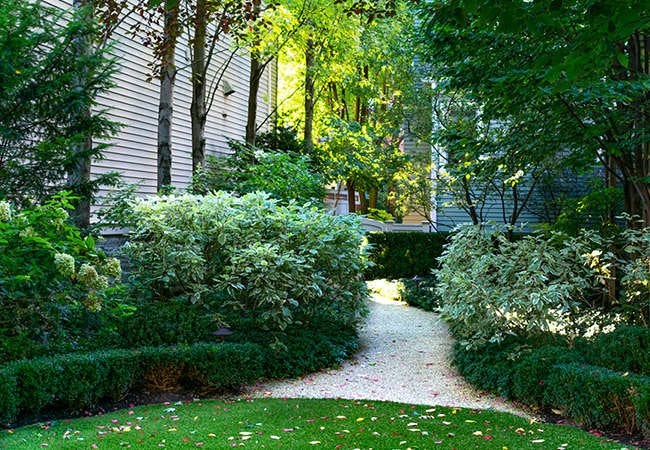

We may earn revenue from the products available on this page and participate in affiliate programs. Learn More ›
Choosing Plants for Shade
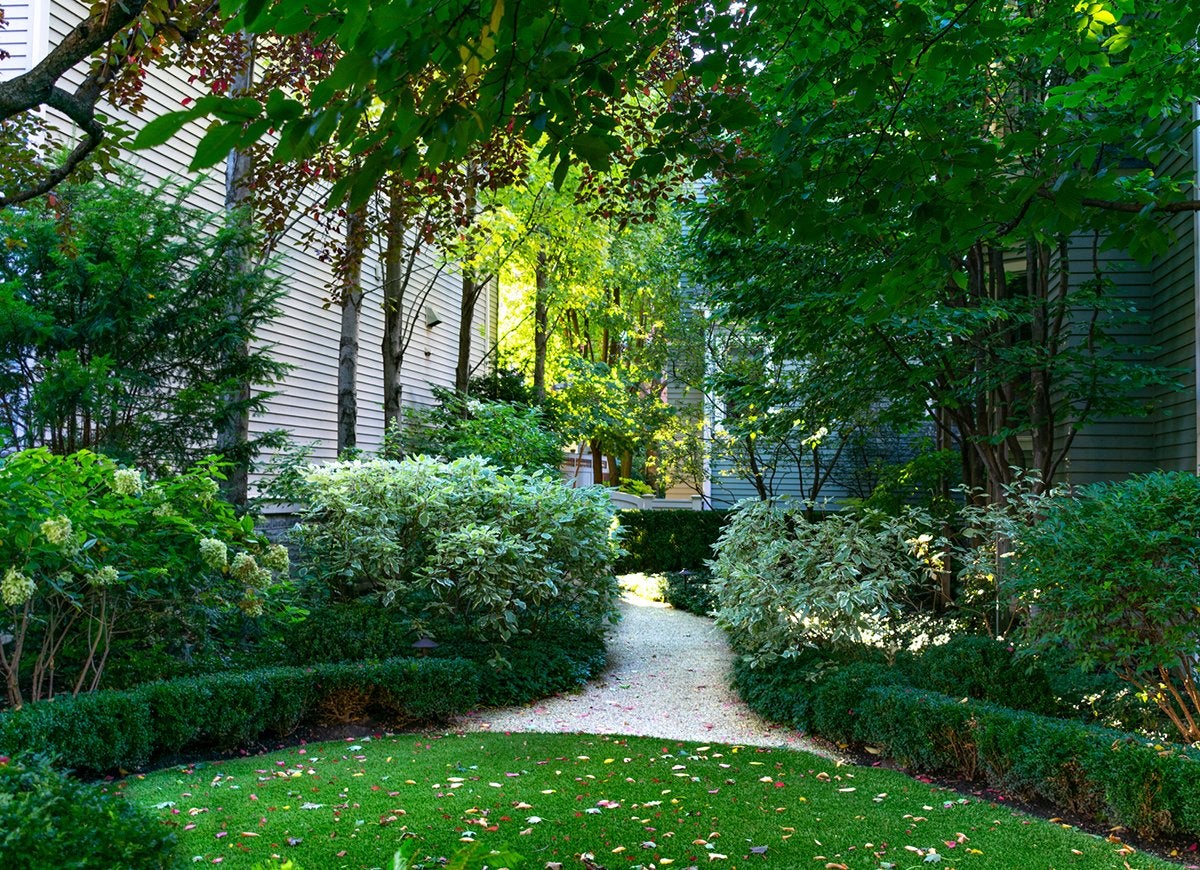
It takes a unique strategy to create an attractive shady landscape. Lawn grass doesn’t grow well in the shade. Fruits and other flowering plants don’t perform well under trees. In addition to the reduced sunlight, garden plants under trees compete for water and nutrients with the roots of the tree casting shadows on the area. Also, consider the visibility of plants in diminished light. Darker flowers and foliage can easily become lost in the shadows.
The plants that perform best under trees tend to flower for shorter periods than those in full sun. Rather than giant swaths of colorful flowers, the sublime beauty of a shade garden comes from complementary groupings of foliage textures and colors and a constant flow of short-lived bloom cycles from different plants throughout the landscape. Strategic bloom and foliage pairings counteract the effects of the deepest shade. Start planning your new shade garden here with these plants to grow under trees.
Autumn Fern, Dryopteris erythrosora
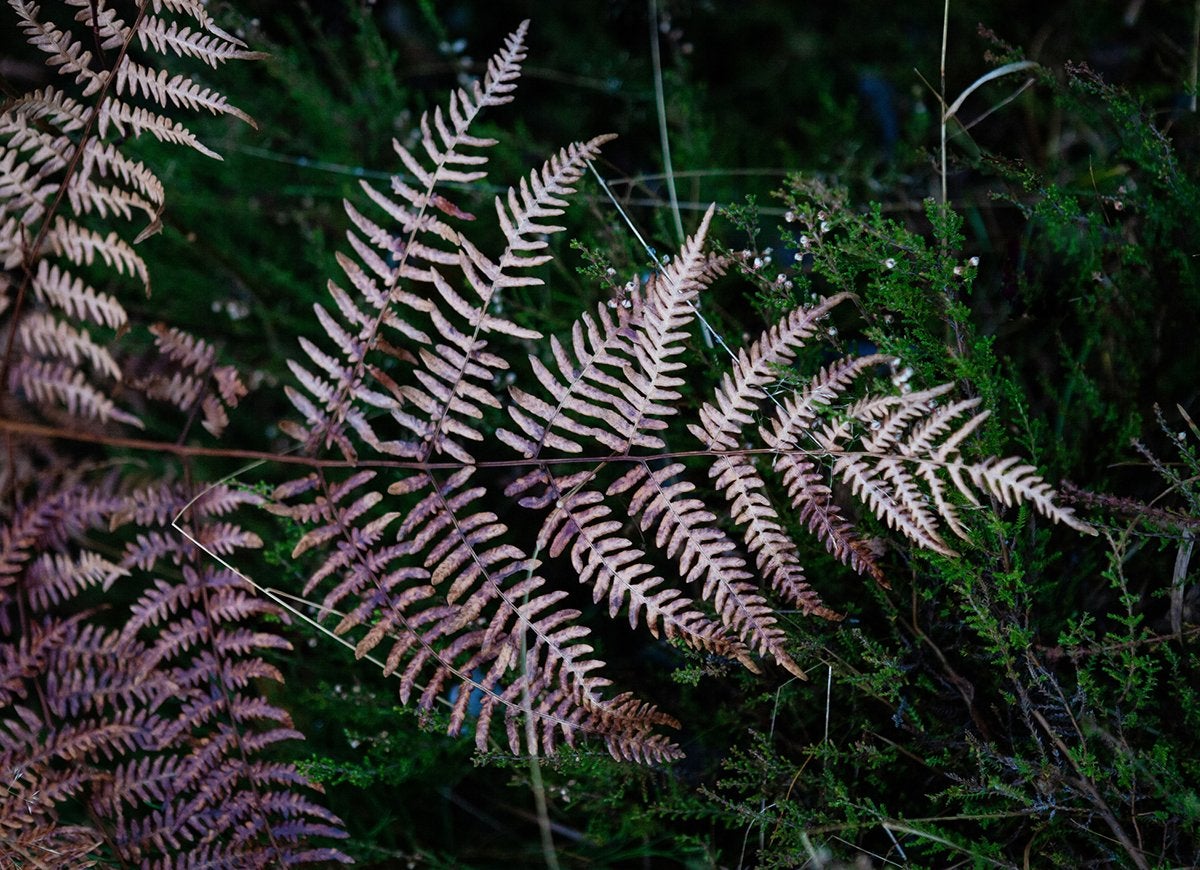
The bronze color of its emerging “fiddle heads” and young fronds gives this rugged fern its common name. Autumn Fern is a tough woodland plant that withstands dry conditions and grows equally well in deep shade or partial sunlight. Plus, Autumn Fern’s mature green fronds persist well after the first hard freeze of the season, adding structure and interest through four seasons in the landscape.
USDA Zones: 4 to 9
Plantain Lily, Hosta ‘Patriot’
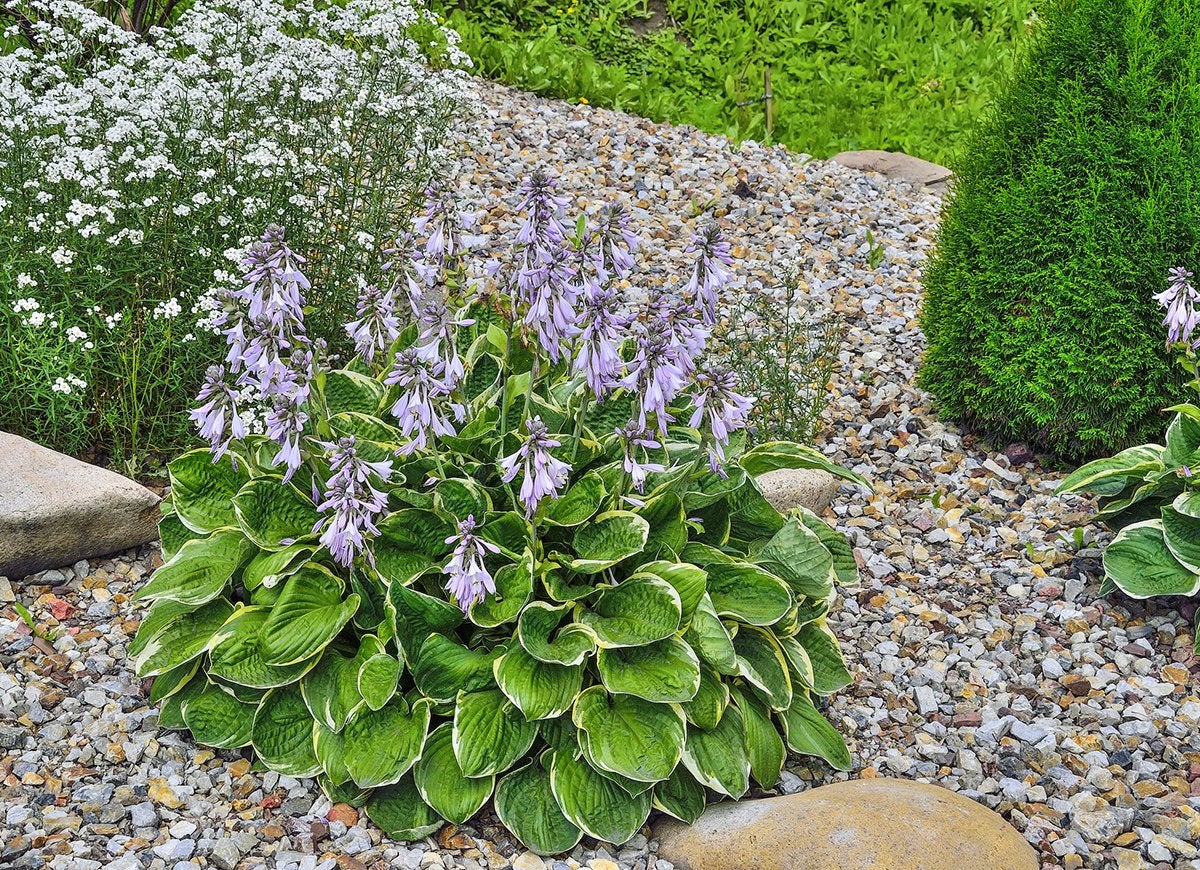
Hostas, also known as plantain lilies, add luxuriant fleshy foliage in myriad colors and sizes, along with midsummer flower spikes to the shade garden. With scores of Hosta cultivars from which to choose, Patriot should always rise to the final cut for a coveted garden spot. Its white variegation brightens even the darkest shade, and the pale lavender flowers attract butterflies and hummingbirds.
USDA Zones: 4 to 8
Coral Bells, Heuchera ‘Tiramisu’
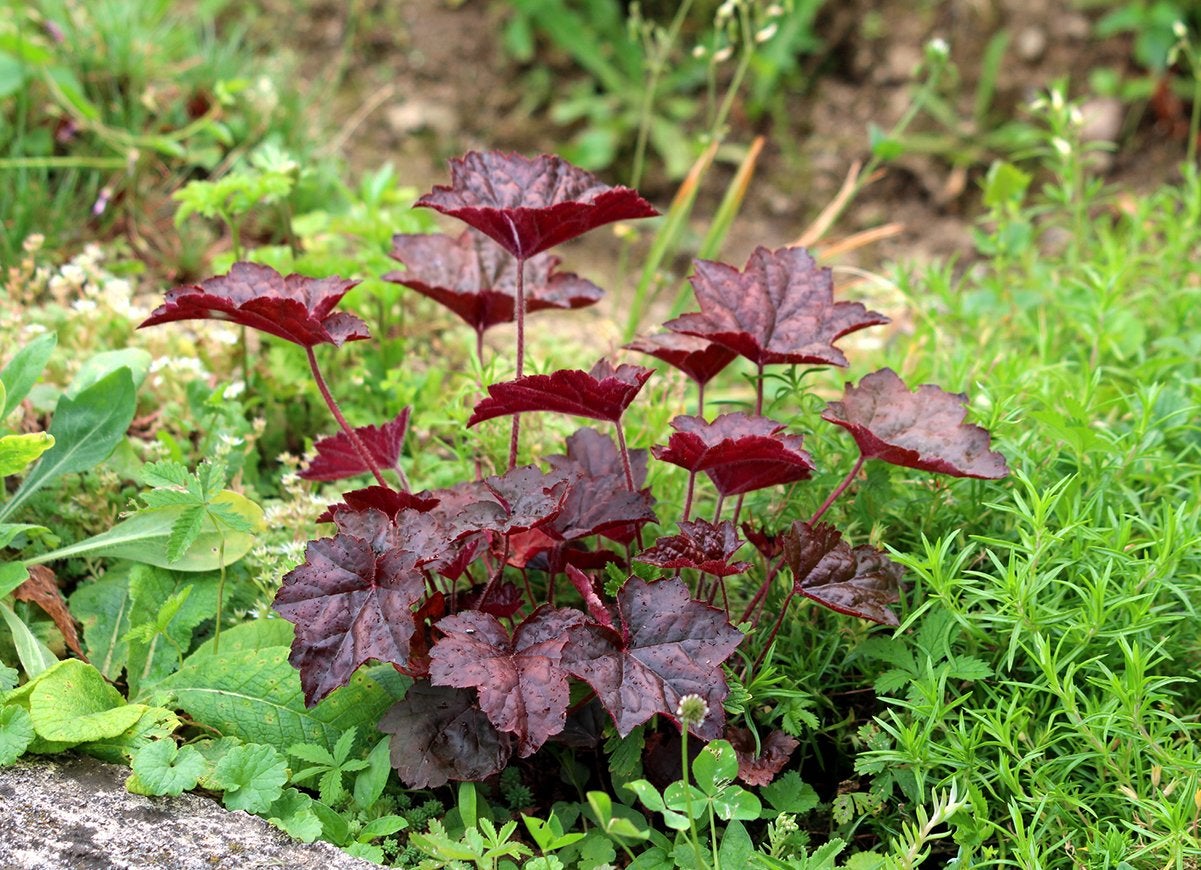
Coral Bells are low, mounding perennials grown for their attractive and colorful foliage. They come in a huge array of leaf colors, including purple, bronze, orange, chartreuse, and lots of different combinations. Avoid the temptation to buy the gorgeous deep purple and bronze cultivars for deep shade gardens. Although they’ll grow well, they easily dissolve into the shadows. Tiramisu offers multicolored foliage from spring through fall and creamy white flowers in summer, making the plant pop in dark shade all season.
USDA Zones: 4 to 9
Ivory Prince Lenten Rose, Helleborus x hybridus ‘Walhelivor’
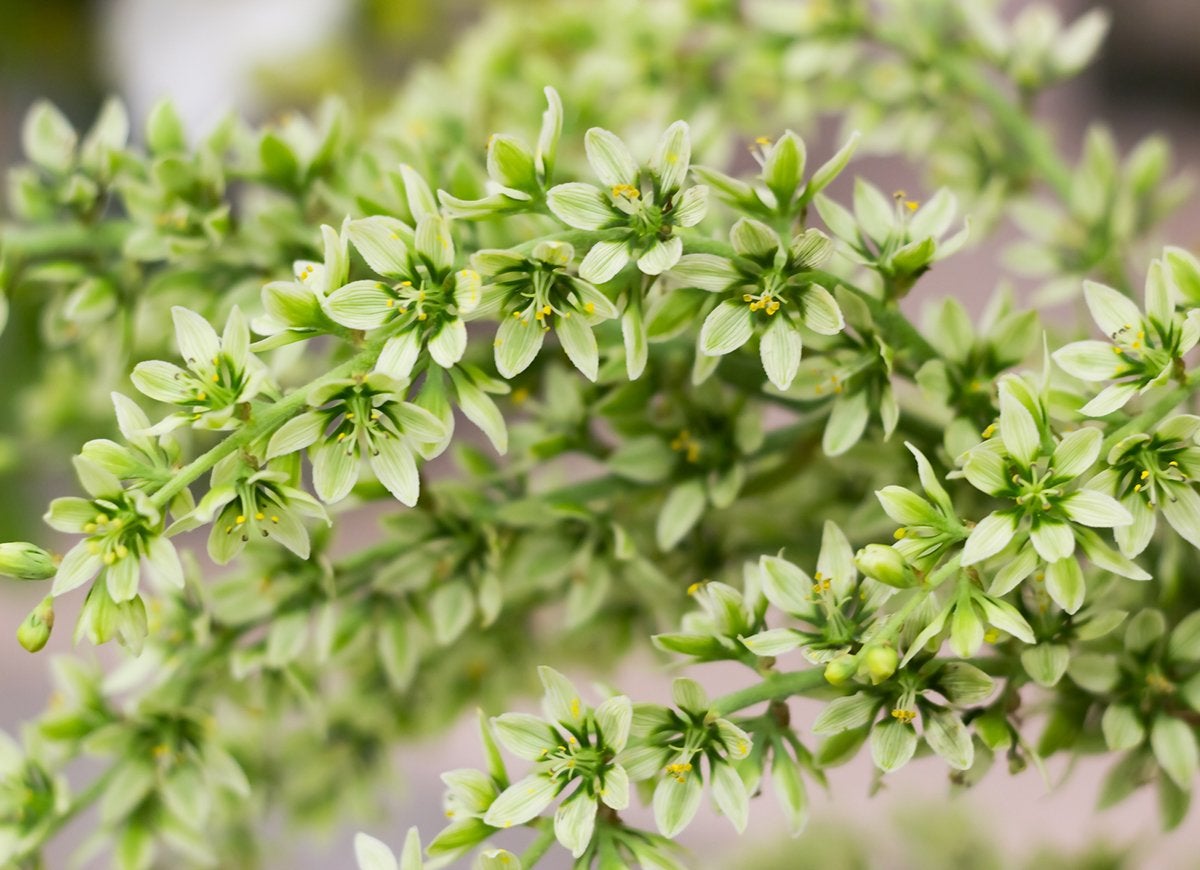
Hellebores always make excellent choices for shady areas. They have evergreen foliage and bloom between early winter and midspring, depending on the cultivar. Ivory Prince Lenten Rose is a low, spreading cultivar with leathery foliage and creamy white flowers. As its common name of Christmas rose implies, it begins its bloom period in late winter, and the flowers persist well into spring.
USDA Zones: 4 to 9
Golden Japanese Forest Grass, Hakonechloa macra ‘Aureola’
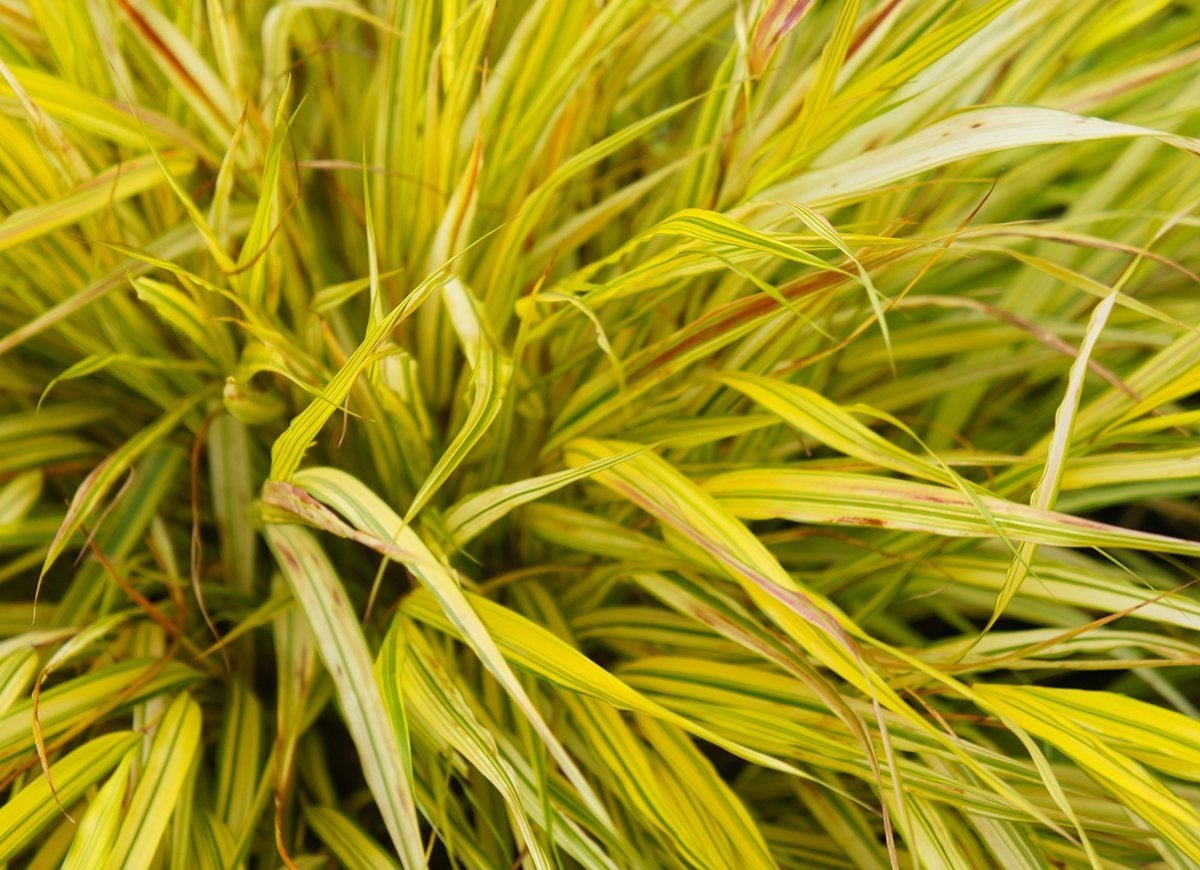
Although grass typically does not love shade, Japanese Forest Grass, also known as Hakone Grass, is a notable exception. Several colorful cultivars, including Golden Japanese Forest Grass, grow as especially welcome additions to shady landscapes because of their bright colors, gracefully arching stems, and spreading growth habit. It makes a wonderful ground cover or border plant under trees.
USDA Zones: 4 to 9
Rheinland Astilbe, Astilbe x arendsii ‘Rheinland’
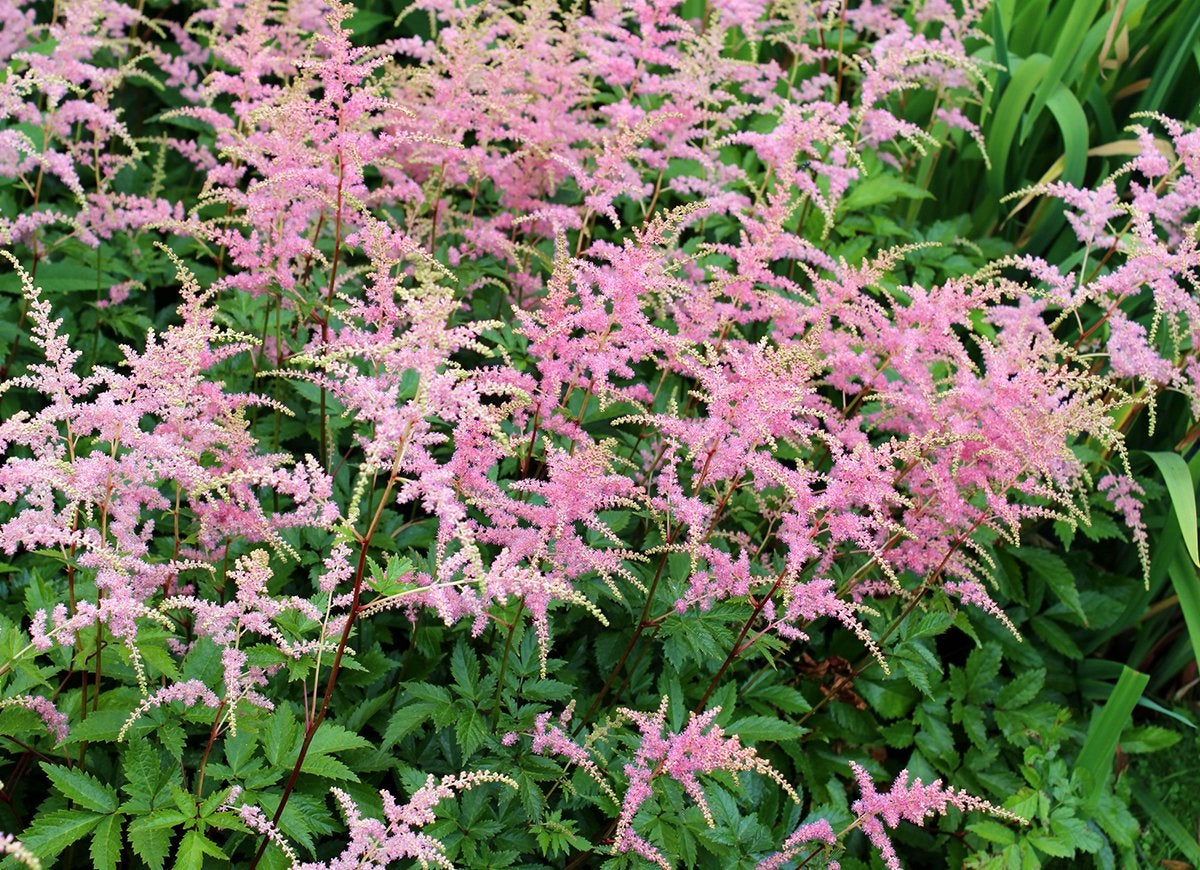
For a strong color statement, plant a mass of astilbe in a shady area of the landscape. Available in shades of red, pink, purple, or white, astilbe delivers a strong color statement otherwise hard to match under trees. Rheinland Astilbe sends up its beautiful pink 2-foot tall flower spikes in spring and early summer, attracting a variety of pollinators to your shade garden.
USDA Zones: 4 to 9
White Trillium, Trillium grandiflorum
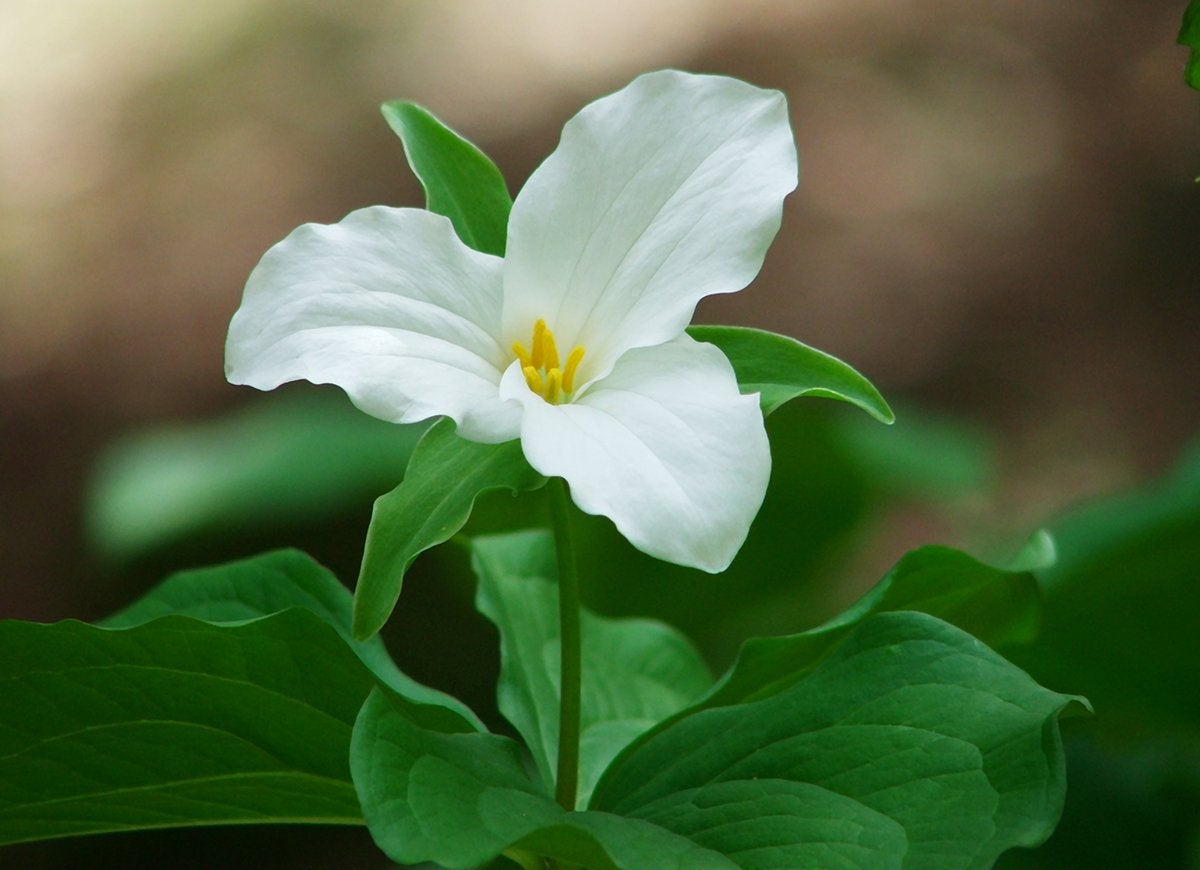
The beloved Trillium deserves a spot in any shade garden conversation. Of all the woodland wildflowers, the early spring ephemeral White Trillium probably makes the list for the most popular among gardeners. What’s not to love about these native flowers? They easily naturalize in open wooded areas or beneath shade trees with moist, rich soil. Their large, snow-white flowers slowly mature to pink before the tiny seed capsules ripen and the plant dies back to the ground in summer.
USDA Zones: 4 to 8
Related: 30 Low-Maintenance Plants for Your Easiest Garden Ever
Angel Wing Begonia, Begonia coccinea
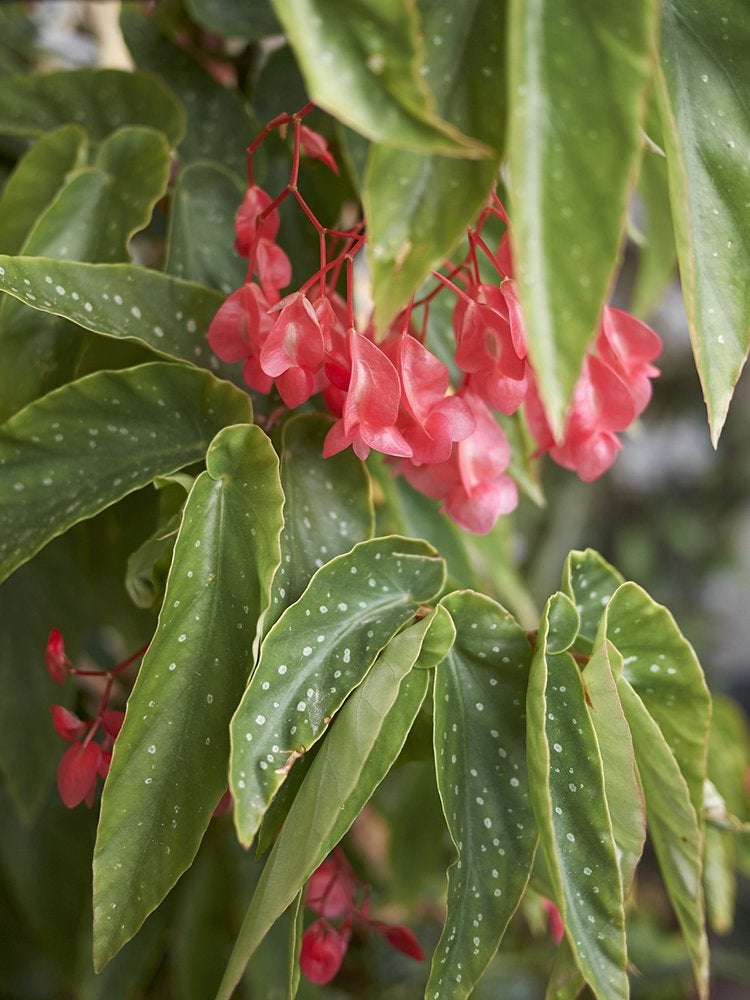
If you simply want an annual flower next to your shaded mailbox, in a pot by the front door, or to plant under trees, begonias prove a great choice. Angel Wing Begonias have large waxy leaves, grow to about 18 inches tall, and bloom in either pink or red. They are super easy to grow, and bloom continuously from spring until the first frost of fall. Angel Wing Begonias perform best in filtered sunlight, so these are perfect plants under trees.
USDA Zones: annual
New Guinea Impatiens, Impatiens hawkeri

New Guinea Impatiens offer continuous flowers throughout the growing season. Use New Guinea Impatiens to add pockets of color in strategic areas in a shade garden, near the deck or patio, along walkways, or tucked among other foliage under trees. This is your go-to plant for strong colors, including purple, orange, red, pink, and more. New Guinea Impatiens flower best when planted in filtered sunlight.
USDA Zones: annual
White Dogwood, Cornus florida
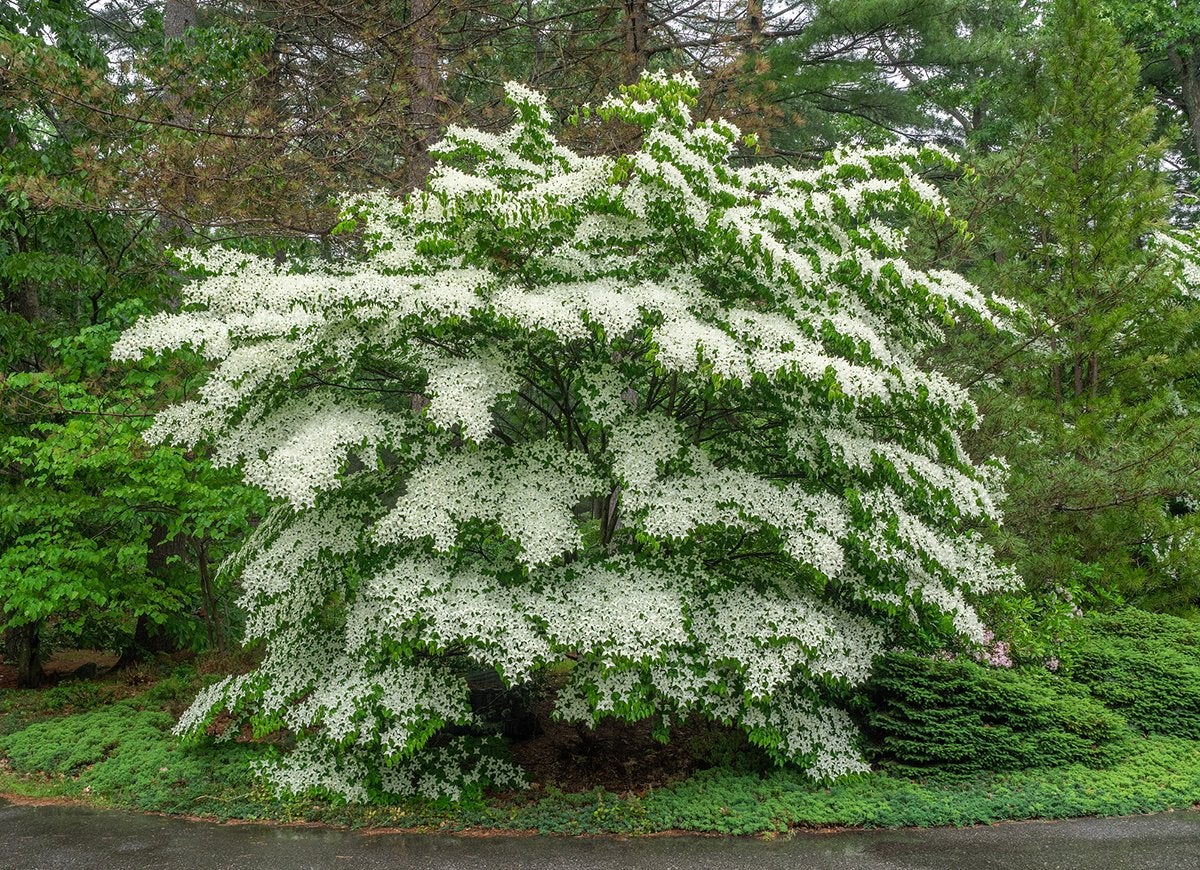
If the dominant tall trees in your landscape form a high, open canopy, consider adding some structure and color between the “roof” and “floor” of your garden. A small flowering tree like White Dogwood can do the trick. When grown as an understory tree, White Dogwood develops a beautiful tiered branch pattern. When in bloom, the white flowers on otherwise bare branches create a wonderful cloudlike effect under trees.
USDA Zones: 5 to 8
Oakleaf Hydrangea, Hydrangea quercifolia
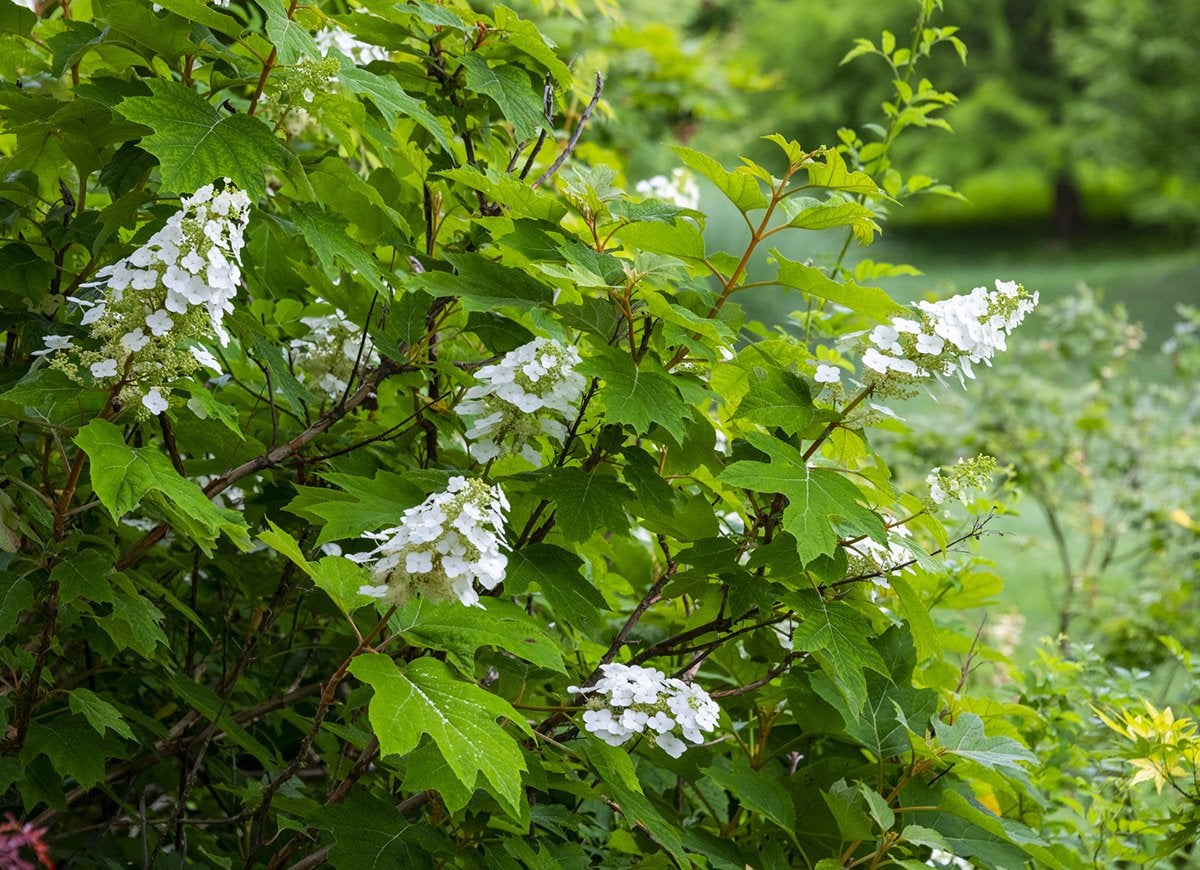
Though most hydrangeas could make this list, Oakleaf Hydrangea too often gets overlooked simply because it has only white flowers. But there’s so much more to this fantastic shade garden plant. The large white late-spring flower clusters mature to deep pink by midsummer, and persist on the plant into fall. The large oaklike leaves change to deep maroon in late fall, making one of the last color changes of the season. The bare branches reveal exfoliating bark in winter, accounting for four seasons of interest.
USDA Zones: 5 to 9
Mountain Laurel, Kalmia latifolia
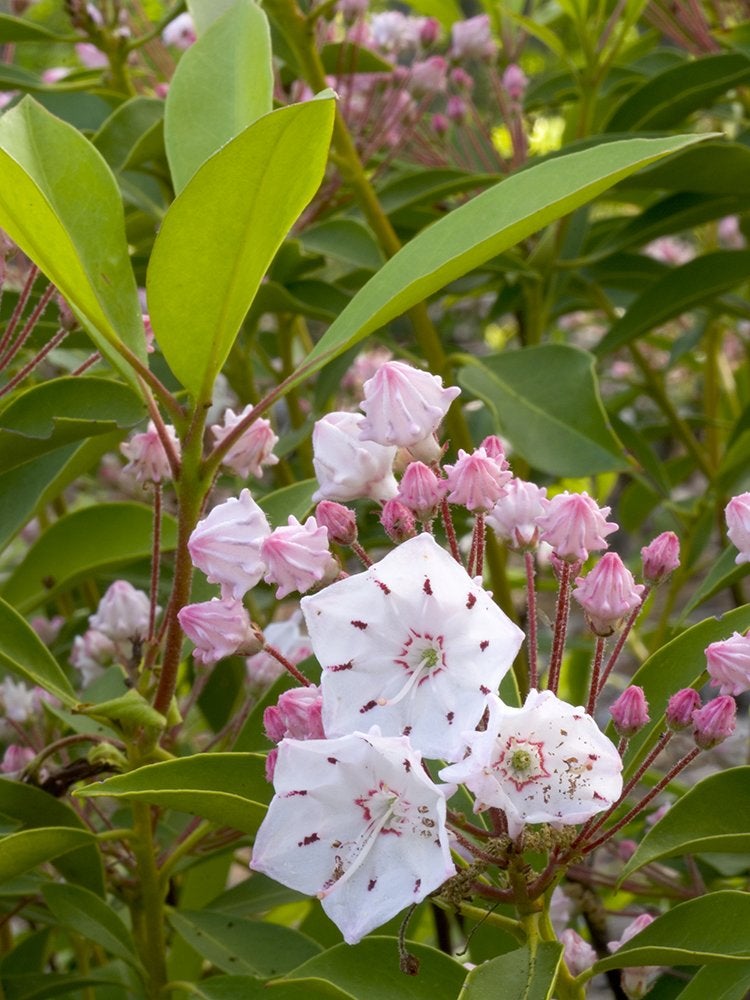
Mountain Laurel naturally grows along the cool, shady slopes and creek banks of the southeastern United States. The spring flowers on Mountain Laurel are some of the showiest around, and the plant requires little help to grow. It tolerates a wide range of growing conditions including heavy soils, frigid winters, and the hot, humid conditions of the Southeast. And, the evergreen foliage on Mountain Laurel makes it suitable as an accent or foundation plant around the house.
USDA Zones: 4 to 9
Related: 15 Affordable Landscaping Projects You Can DIY in a Day
Jelena Witch Hazel, Hammamelis x intermedia ‘Jelena’
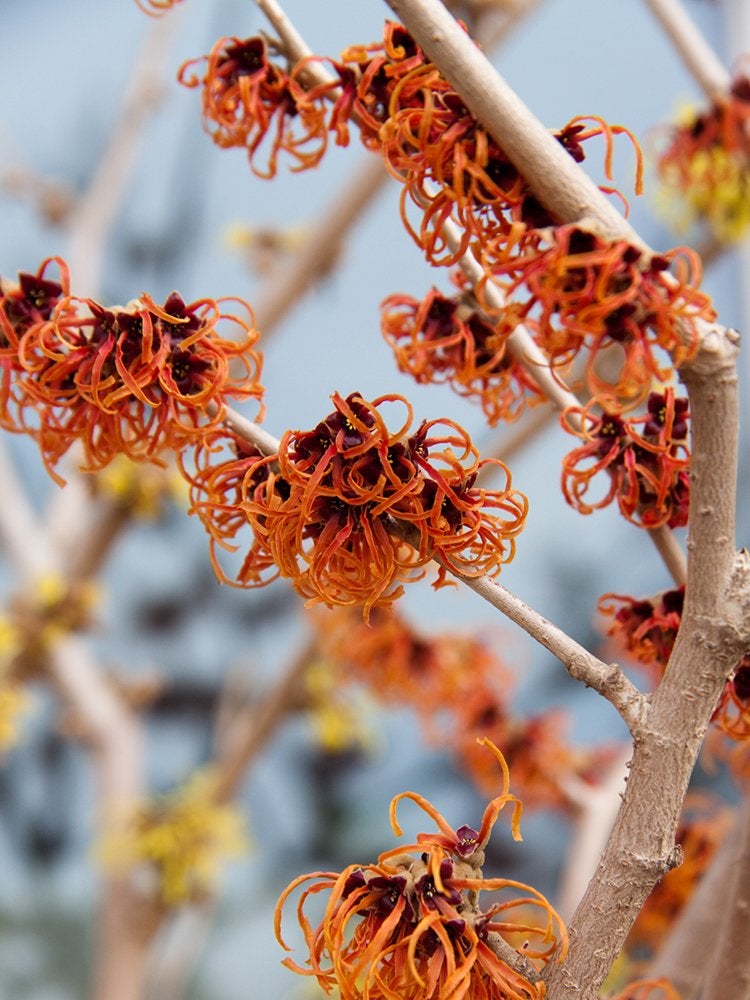
The world needs more witch hazels. Jelena Witch Hazel grows as a large shrub with a spreading habit and thrives in the shade. These large deciduous shrubs bloom on bare stems in late winter. Jelena’s fragrant, amber-colored blooms attract early-season pollinators and serve as a wonderful reminder that spring approaches. Plant Jelena in a large open space near a main entrance or patio, or any empty spot that gets partial shade from trees.
USDA Zones: 5 to 8
Viridis Yew, Taxus x intermedia ‘Viridis’
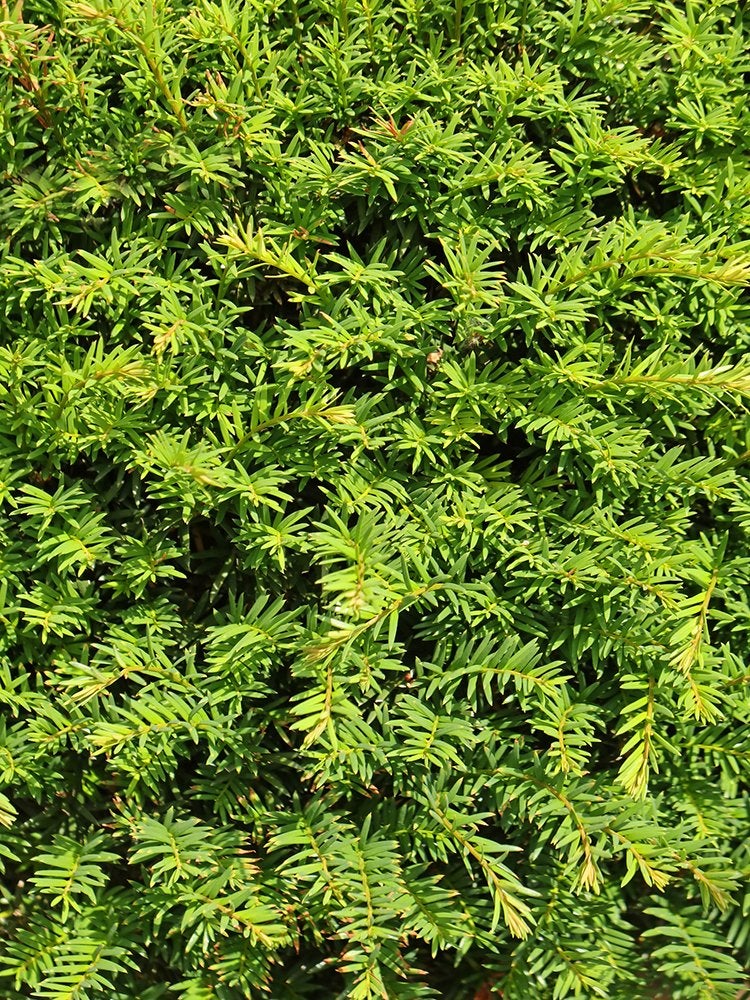
Most conifers need full sun, but not so for yews. These cultivars are derived from understory shrubs in the forests of Asia and North America. Viridis Yew tolerates nearly full shade, where it retains its deep green, dense foliage. Its pillar shape makes yew a wonderful foundation or corner accent plant, especially when grouped with ferns, astilbe, and hostas near its base. Viridis Yew also provides some of the best privacy screening among plants for shade.
USDA Zones: 3 to 7
Made for the Shade
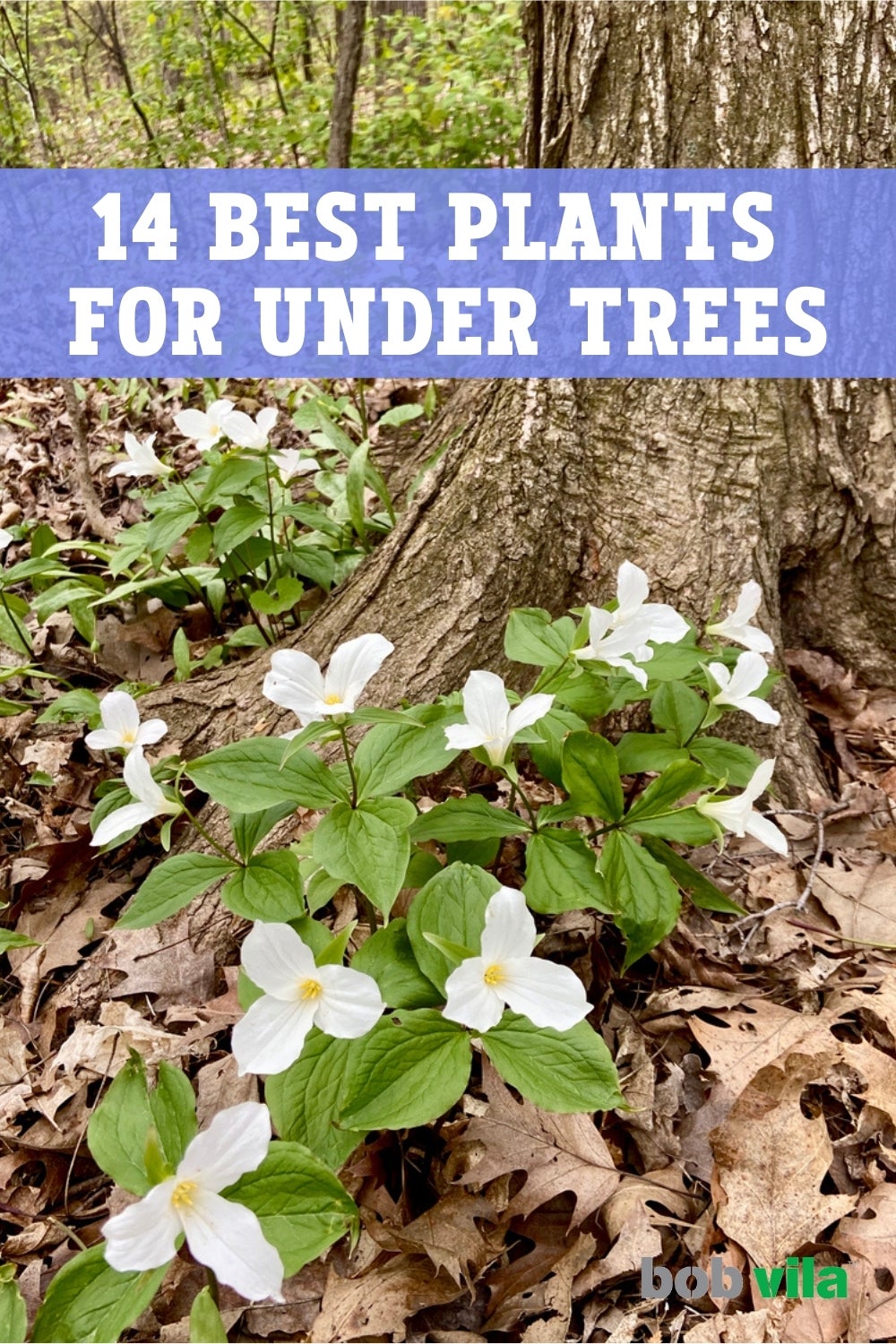
The area beneath a tree is a tricky spot for plants to grow—but not impossible. Try these flowers and shrubs for under trees if you’re looking to add some color to your landscape.

Our Favorite Prime Day Deals Are Sure to Sell Out
Prime Day runs July 8 through 11, and Amazon (and many more retailers) have released hundreds of exciting seasonal deals. Check out our favorite products in the sales, from power tools and outdoor equipment to robot vacuums and power stations.